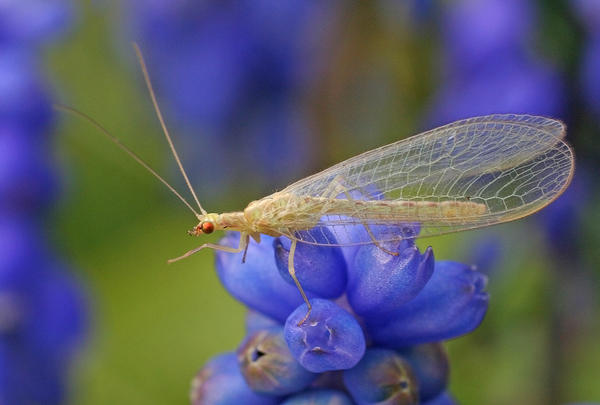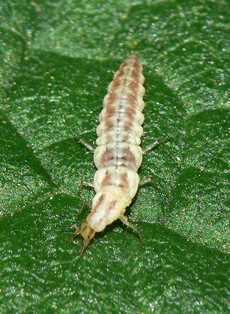How Insects Help Your Garden
An adult lacewing Insects keep each other in balance. In a wild forest or prairie, you would seldom see large areas of insect damage or out-of-control insect populations. That’s because in any healthy ecosystem, there is a balance of grazers Lacewings provide an example of how predators can work. Adult lacewings do not kill pest insects. They actually eat nectar, pollen and honeydew. It is their predacious offspring that get the job done. The adult lacewing lays her eggs on a leaf, attached to a hair-like filament. After a few days the eggs hatch, and a tiny larva emerges ready to eat the pests. Lacewing larvae are also known as aphid “lions”. They voraciously attack their prey by seizing them with large, sucking jaws and inject paralyzing venom. The hollow jaws then draw out the body fluids of the pest. Each lacewing larva will devour 200 or more pests or pest eggs per week for 2 to 3 weeks. After that, they pupate by spinning a cocoon with silken thread. Five days later, adult lacewings emerge to mate and repeat the cycle. Lacewings need places to live, and nectar and pollen to eat all through the season in order to thrive. A lacewing larva top | Newsletter Home | Article Index | Archive
|



 (animals that eat plants: they can be big like zebras or small like aphids) and predators (which could be big like lions or small like ladybugs). One of the many bad effects of pesticides, even “natural” ones, is that they tend to kill off the predator bugs and let the grazers multiply unchecked.
(animals that eat plants: they can be big like zebras or small like aphids) and predators (which could be big like lions or small like ladybugs). One of the many bad effects of pesticides, even “natural” ones, is that they tend to kill off the predator bugs and let the grazers multiply unchecked.